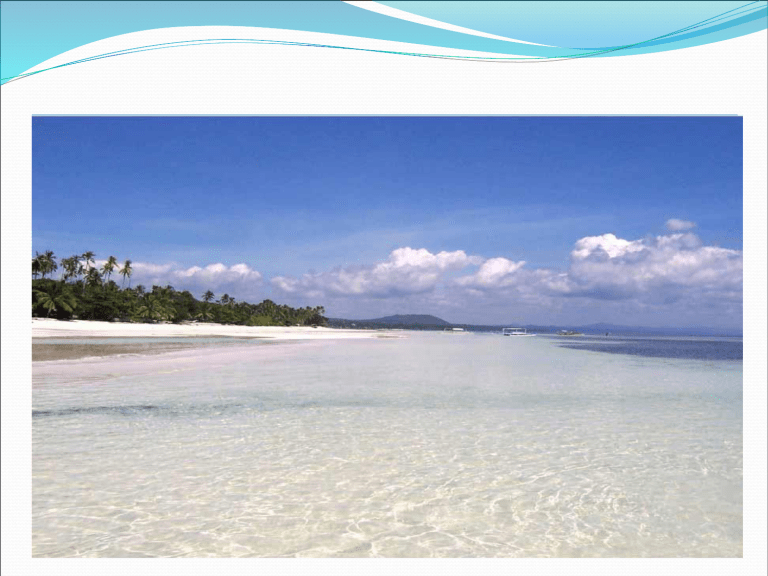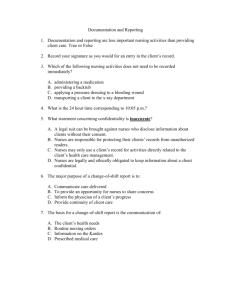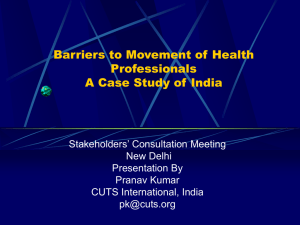The Philippines: Sun, Sand and a Sea of Healthcare Workers

The Philippines
Rey Vivo, MD
Assistant Professor of Medicine
Texas Tech University Health Sciences Center
The Islands
7,107 islands making up an archipelago
Climate: Tropical
Area: 115,831 sq mi
#72 in the world
Population: 91 million
#12 in the world
Capital: Manila
Currency: Peso
(PhP47 = US$1)
6
11
9
18
The History
Negritos – Malay aboriginals
13 th century – Islam
1521 – Ferdinand Magellan “discovers” the islands
Manila is established as capital of the new Spanish colony
Christianity
1880s – Propaganda Movement, Katipunan
1898 – US defeats Spain; “First Philippine Republic”
1935 – Philippine Commonwealth; then WWII
1946 – Independence from US
The Marcos dictatorship, People Power revolution(s)
“300 years in the convent and
100 years in Hollywood”
The People
Manila is 11 th most populous metro in the world
11 million (11%) overseas; largest diaspora
Literacy rate: 93%
Language: Filipino and English; >180 dialects
Labor force: 34.2 million
The Culture
Spanish: names, language, religion/customs, food, architecture
“…a Latin American country transported to the Orient…”
American: fast food, music, movies, pop culture
“Brown Americans”
The Culture
Harmonious social interaction
Debt of gratitude
Colonial mentality
Hospitality
Healthcare Issues
Health and healthcare
Top causes of mortality: cardiovascular, cancer, accidents, pneumonia, tuberculosis
1940s-1980s: infectious diseases led all causes
PhilHealth – national health insurance program
Out-of-pocket share emphasizes inequality
75% pharmaceuticals imported
2001 – 2004: >5,000 physicians left
30 medical schools
2000 – 2003: 51,850 nurses migrated
350 medical schools
Approx. 1,000 hospitals have closed in the last 5 years
Physicians
Top countries of medical education for IMG physicians
Country
India
Philippines
Mexico
Pakistan
Dominican Republic
Total
47,581
20,861
13,929
11,330
7,892
Percentage
19.9%
8.7%
5.8%
4.8%
3.3%
American Medical Assn., 2007
Why leave?
Harsh realities: Compensation/month for resident MDs
Philippines South Africa USA
$300 $1,000 $4,000
Why leave?
Other limitations
Poor working/training conditions, quality of life
Gov’t budget for health
MD to person ratio: US……… 1:150
Cuba…. 1:225
Phil…... 1:>10,000
Poor job prospects, difficulties in establishing practice
Specialties
Research
Local political/economic forecast
Challenges
USMLE
Cost
Visas/Immigration laws
Post-training employment opportunities
Healthcare differences
Disrupted families/relationships
Diaspora
2001 – 2004: >5,000 physicians left
2000 – 2003: 51,850 nurses migrated
Nursing schools are mushrooming everywhere
40 – 50% of nursing students are “second-coursers”
At present 6,000 doctors are enrolled in nursing schools, all wanting to leave for “greener pastures” abroad
>50,000 caregivers have trained; about half have left for jobs overseas
Nurses
84%
Percent of Hospitals Hiring Foreign-educated
Nurses by Country from which They Recruited,
2006
33%
29%
Philippines Canada
American Hospital Assn., 2007
India
9%
Africa
7%
China
6%
Korea
Nurses’ compensation
USA Canada Philippines
$200 $200 $200
Daily Daily Monthly
From
MD
to
RN
2000 – 2004: 5,000 MDs left to work abroad as RNs
2004 – 2005: >2,400 MDs took the nursing boards
Currently, >4,000 MDs enrolled in nursing schools
Generalists and specialists; aged 25-60 years
“Retrogression”
Alliance of Health Workers
Pros and Cons
Remittances from overseas workers
Expedited but suboptimal training
Reduced unemployment
Technology transfer
Healthcare cultural diversity
Demoralization of MDs
“Brain drain”
Brain drain
Filipino-born nurses and Indian-born doctors each represent about 15 percent of all nurses and doctors in the Organization for Economic Cooperation and
Development (OECD).
“The migration of doctors and nurses from the developing to the developed world has only a limited impact on the crisis in health care in poor countries.”
AFP
Gov’t solutions
Manage migration
Mandatory government service
Career advancement programs
Knowledge exchange
JAMA. 2008;299:1753-4.
http://www.youtube.com/watch?v=YdBANriBrlw



